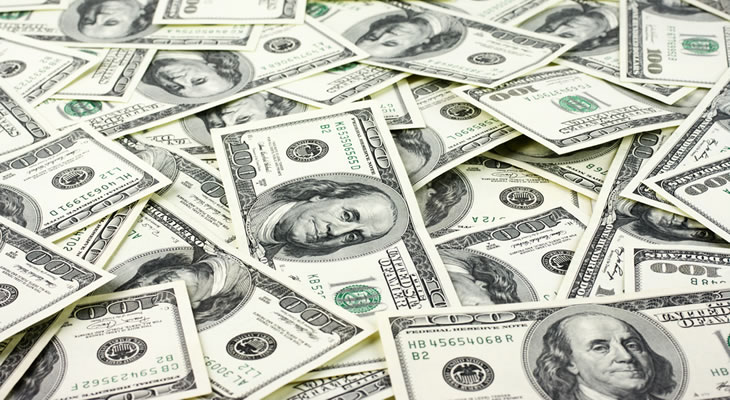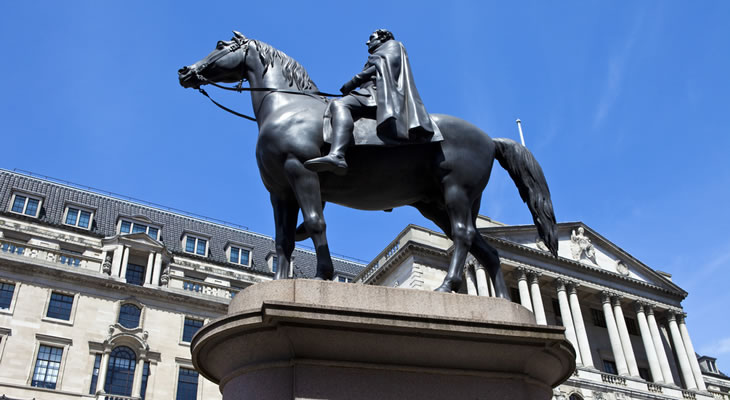- GBP to USD Exchange Rate Reaches 1.34 – Market calm in period of uncertainty
- UK Government in Transition – Conservatives picking new leader, Labour leader battle ongoing
- US Dollar Sentiment Remains Sturdy – But investors wary on Brexit damage to US economy
- Forecast: Article 50 and Central Banks in Focus – Markets fluctuating amid uncertainty
The GBP to USD exchange rate has continued its slow uptrend on Wednesday after recovering slightly on Tuesday. A calmer market took advantage of Brexit uncertainty by rebuying the Pound from its cheapest levels, but its recovery was minimal.
After gaining 120 pips throughout Tuesday trade, the Pound Sterling to US Dollar exchange rate has continued climbing slowly. At the time of writing, the pair was up around 0.5% and trended in the region of 1.3420. However, it remained well below the week’s opening levels of 1.3675.
Pound (GBP) Bounces Back from Over 30-Year Low
The Pound hit its lowest point in decades against the US Dollar on Monday as the markets’ Brexit shock reached its peak.
Since then, GBP/USD has recovered from an absurdly cheap low of 1.3146 as investors bought the Pound during calmer trading sessions. Its recovery continued on Wednesday morning.
The BBC reports;
‘After rising 2.6% on Tuesday, the FTSE 100 share index was up 2.1% at 6,271.48 by mid-morning.
The Pound rose 0.3% against the Dollar to $1.3383, although Sterling still remains well below levels reached before the referendum.
Analysts also warned that the rally of the past couple of days might be short-lived.’
British MPs and banks remain embroiled in largely private discussions as the UK remains lost within a period of uncertainty and transition.
Conservative MPs are contemplating who will replace Prime Minister David Cameron, while Labour MPs continue to resign from their positions in protest over Jeremy Corbyn’s leadership.
Discussions are also ongoing among MEPs in Brussels. Scottish National Party (SNP) Leader Nicola Sturgeon is notably meeting with EU officials as she makes her case for Scotland to remain in the EU.
Scotland, a member of the United Kingdom, voted overwhelmingly in favour of ‘Remain’ in last week’s EU Referendum. There is large unrest within the country after news that UK could pull the country out of the EU against its will.
US Dollar (USD) Sentiment Slips as Economic Worries Take Hold
The ‘Greenback’ was the ‘safe-haven’ currency of choice for many investors during the Brexit Pound selloff, and as a result it gained a historic amount against Sterling after last Thursday.
However, sentiment towards the US Dollar has been mixed overall with markets now worrying about the US economy going forward. Regardless, the Dollar continues to be in a solid position.
The US economy had been on what many economists considered a slow but sure road to recovery throughout 2016, but the Brexit vote has seemingly sent shockwaves hampering its progress.
Optimistic US news released on Tuesday reminded investors of what could have been. The highly anticipated survey for consumer confidence jumped from 92.4 to a high 98.0 in early June, but analysts widely expect this figure to plummet by the time of July’s report.
Similarly, a new estimate of the US’ Gross Domestic Product (GDP) score came in at an optimistic 1.1%, beating out the expected 1.0%. However, this score could have little relevance going forward if June and July’s GDP reflects Brexit-related unease in the global market.
US markets are also anxious about the Federal Reserve’s near future. Fed rate hike bets have been wound back considerably, which has also put a dampener on US Dollar sentiment.
GBP to USD Forecast to Drop on Brexit Developments
While markets took a breather from the Pound selloff on Tuesday and Wednesday, markets appear primed to sell Sterling in droves once again depending on how the Brexit scenario develops.
Joshua Mahoney, market analyst at IG, commented on the market’s recovery;
‘The big question is whether the worst is over, and the answer is unlikely to be yes.
Sentiment is almost entirely dictated by unknown quantities for the coming months and even years, where the next major event coming when or if article 50 is enacted.
As such, having such a long period with this colossal cloud hanging over financial markets will be unlikely to help confidence and risk appetite.’
The focus is currently on the Conservative Party’s leadership, with MPs set to debate over who is to be Prime Minister David Cameron’s successor.
Once a successor is decided (which may not be until September), they are highly expected to indicate when they will be activating Article 50 and begin the EU withdrawal process.
Central banks are also being given the eye around the world, with the Bank of England (BoE) and Federal Reserve among them. The BoE is widely expected to be preparing easing measures for the UK economy in the face of the market shock that the Brexit brought on.
The Federal Reserve is likely to dampen hopes that investors shared earlier in June. Economists had previously expected the Fed to hike the key US interest rate twice more in 2016, but now most bets hedge towards only one. Some bears even suggest a cut may be on the cards, depending on the severity of Brexit shockwaves.
At the time of writing, the GBP to USD exchange rate trended in the region of 1.3420, while the USD to GBP exchange rate traded at around 0.7450.



Comments are closed.